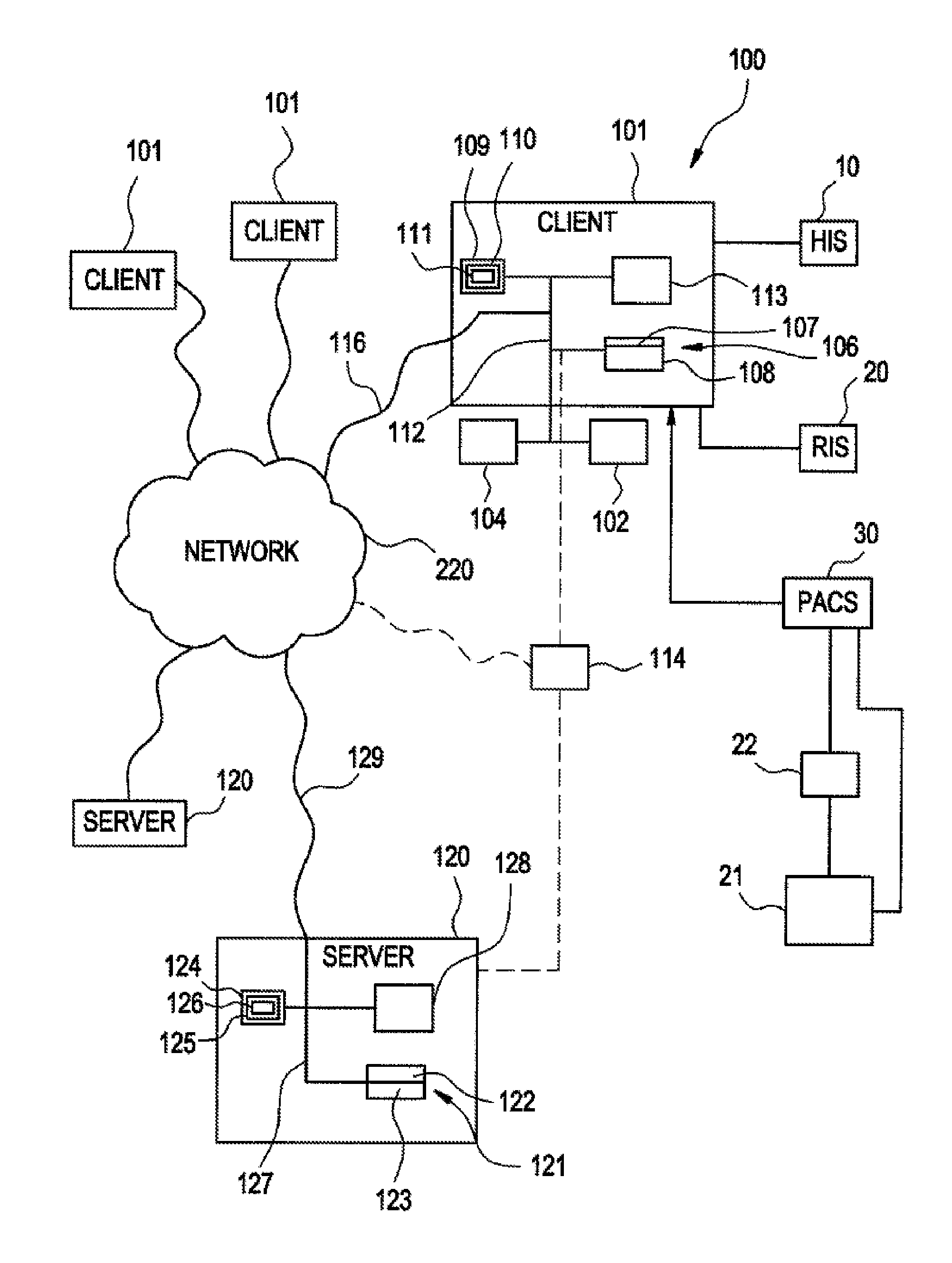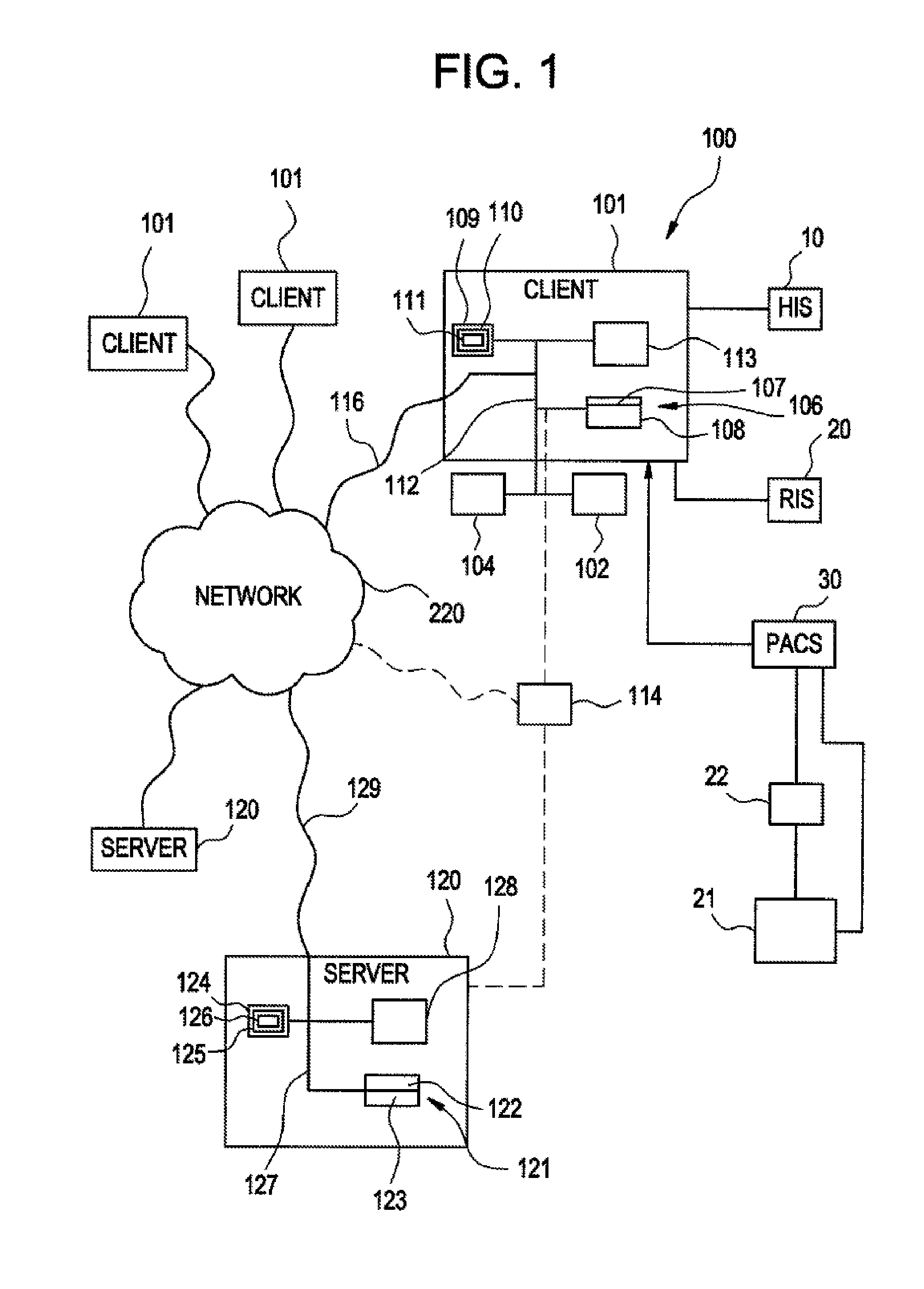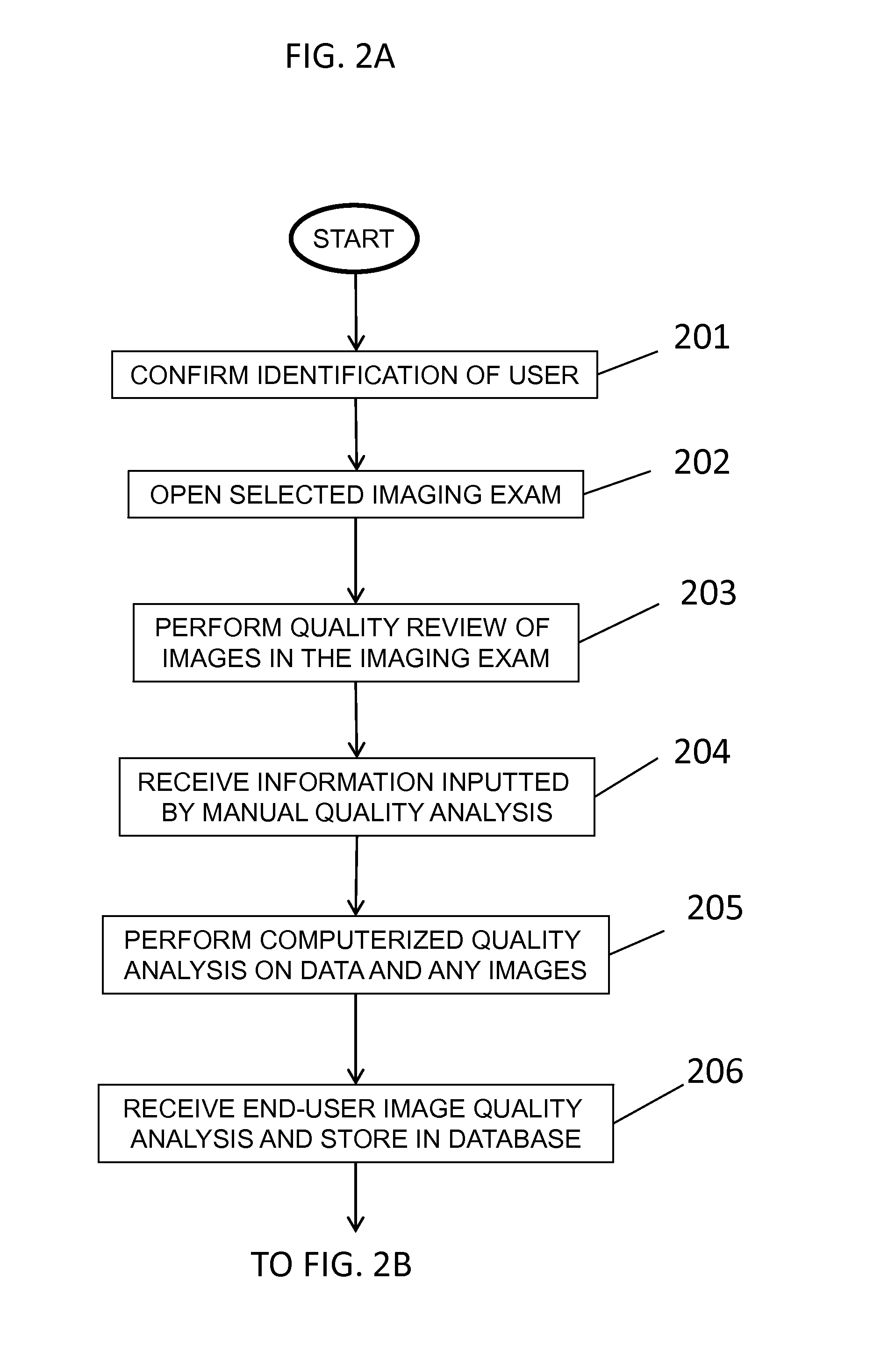Method and apparatus for image-centric standardized tool for quality assurance analysis in medical imaging
a quality assurance analysis and image-centric technology, applied in image analysis, healthcare informatics, healthcare resources and facilities, etc., can solve the problems of ineffective standardized methods for quantitative and qualitative quality assessment, stagnation of quality deliverables in healthcare, and often being sacrificed (or subservient). achieve the effect of improving medical imaging
- Summary
- Abstract
- Description
- Claims
- Application Information
AI Technical Summary
Benefits of technology
Problems solved by technology
Method used
Image
Examples
Embodiment Construction
[0041]The present invention improves medical imaging by standardizing image quality analysis, directly links the quality data with the imaging dataset (i.e., image-centric), continuously tracks and records image quality data for longitudinal analysis, and analyzes all imaging datasets while taking into account a myriad of clinical, technical, and patient-specific variables affecting quality measures.
[0042]According to one embodiment of the invention illustrated in FIG. 1, medical (radiological) applications may be implemented using the system 100. The system 100 is designed to interface with existing information systems such as a Hospital Information System (HIS) 10, a Radiology Information System (RIS) 20, a radiographic device 21, and / or other information systems that may access a computed radiography (CR) cassette or direct radiography (DR) system, a CR / DR plate reader 22, a Picture Archiving and Communication System (PACS) 30, and / or other systems. The system 100 may be designed...
PUM
 Login to View More
Login to View More Abstract
Description
Claims
Application Information
 Login to View More
Login to View More - R&D
- Intellectual Property
- Life Sciences
- Materials
- Tech Scout
- Unparalleled Data Quality
- Higher Quality Content
- 60% Fewer Hallucinations
Browse by: Latest US Patents, China's latest patents, Technical Efficacy Thesaurus, Application Domain, Technology Topic, Popular Technical Reports.
© 2025 PatSnap. All rights reserved.Legal|Privacy policy|Modern Slavery Act Transparency Statement|Sitemap|About US| Contact US: help@patsnap.com



